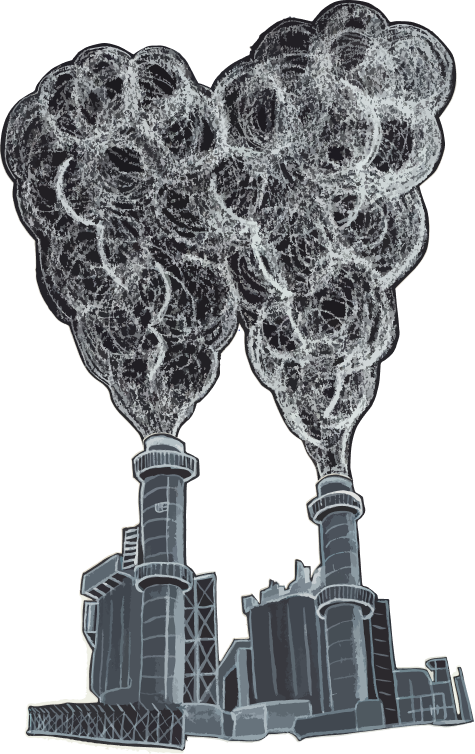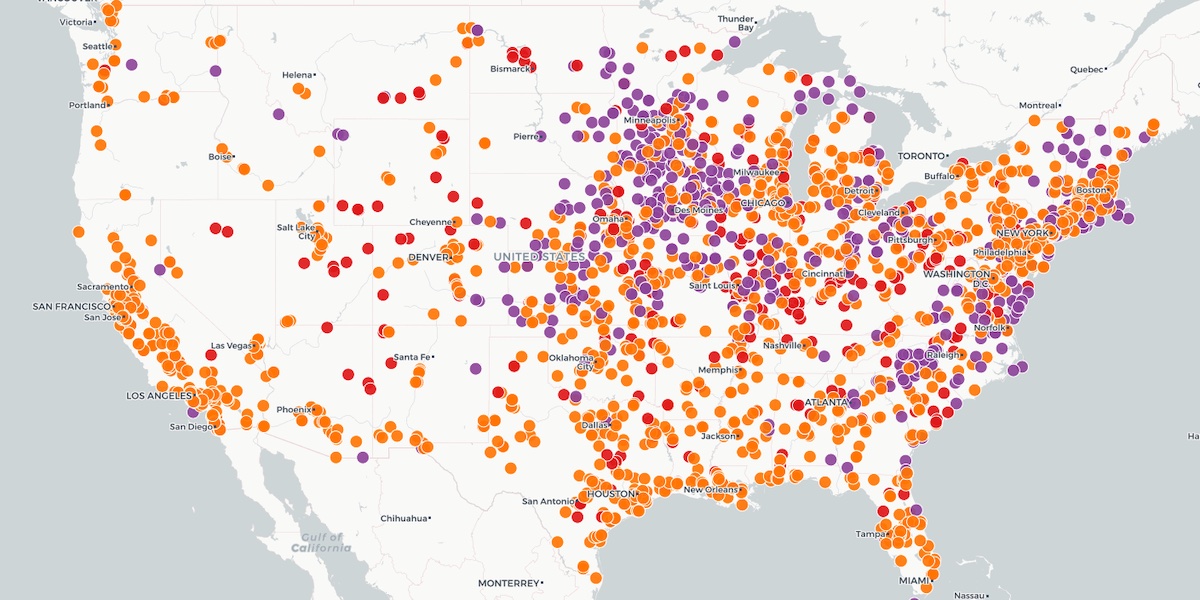Montana
Back to mapTo get to zero by 2050, Montana must cut climate pollution by
1.7 million metric tons of CO2 equivalent a year.
Emissions in Montana
Million metric tons of carbon dioxide equivalent (MMTCO2e) emissions
Note: Grey area indicates missing data due to processing delays.
Source: WRI, Mar 2021
This is how we're going to do it.
Source: WRI, Mar 2021
- Boilers and furnaces with heat pumps
- Gas stoves with induction ranges
- No-till farming to keep CO2 in the soil
- Capturing methane leaks from landfills
- Capturing CO2 to make emissions-free concrete
- Burning green hydrogen to make emissions-free steel
- Plugging methane leaks from gas pipelines
Decarbonize Our Buildings
7% of Montana's climate pollution comes from buildings.
We burn fossil fuels to heat our air, water, and food.
To cut this pollution...
Let's electrify our heat!
We'll replace...
...in all of Montana's 773,000 buildings.
In fact, 31% of buildings in Montana are already fossil fuel free!
That means we only need to electrify the remaining 533,000 dirty buildings in Montana. That's around 19,000 per year.
Source: Microsoft, Mar 2021; NREL, Dec 2021Electrifying all buildings cuts 7% of the pollution.
Decarbonize Our Transport
17% of Montana's pollution comes from cars, trucks, trains, and planes.
But mostly from cars.
To cut this pollution,
your next car must be electric.
Or consider going car-free with public transit, bikes/e-bikes, car share, or other alternatives!
There are 459,000 vehicles in Montana and 940 are already electric (0.2% of the total).
We need to electrify (or replace) the remaining 458,000 gas-powered vehicles. That's around 16,000 a year.
Source: DOT, Feb 2021Electrifying all transportation cuts 17% of the pollution.
Decarbonize Our Power
31% of Montana's pollution comes from burning coal, gas, and oil to make power.

To cut this pollution...
Put solar panels on your roof!
Then, we'll replace all fossil fuel power plants with solar and wind farms.

...and find good jobs for those workers.
Current Fossil Fuel Power Plants in Montana
5 coal plants
Colstrip
Rosebud County
2,363 MW
Hardin Generating Station
Big Horn County
116 MW
Lewis & Clark
Richland County
69 MW
Colstrip Energy LP
Rosebud County
46 MW
Western Sugar Cooperative - Billings
Yellowstone County
2 MW
6 gas plants
Dave Gates Generating Station
Deer Lodge County
203 MW
Culbertson Station
Roosevelt County
91 MW
Glendive Generating Station
Dawson County
84 MW
Basin Creek Plant
Silver Bow County
55 MW
Miles City GT
Custer County
23 MW
Sidney MT Plant
Richland County
4 MW
1 oil plant
Yellowstone Energy LP
Yellowstone County
68 MW
But wait!
It's not enough to replace our power plants with wind and solar farms.
To power our electric cars and buildings, we need two times the electricity we have today.
In all, we'll need to build 2,000 Megawatts of wind power and 1,000 Megawatts of solar power.
Since Montana already has 322 Megawatts of wind and 9 Megawatts of solar, that's 1,000 Megawatts of wind power we need to build and 1,000 Megawatts of solar power. That's around 44 Megawatts of wind power and 52 Megawatts of solar power a year.
Source: EIA, Apr 2022Decarbonizing all dirty power cuts 31% of the pollution.
And gives us zero-emissions power we need to eliminate pollution from buildings and cars!
Other Emissions
The last 45% of Montana's climate pollution comes from other sources...
This includes farming, landfills, industry, and leaks from gas pipelines.
There's no one solution to solve these problems, but there are lots of great ideas:
Ready to do your part?
Learn how to electrify your own machines and pass local policy to electrify the rest
Take Action